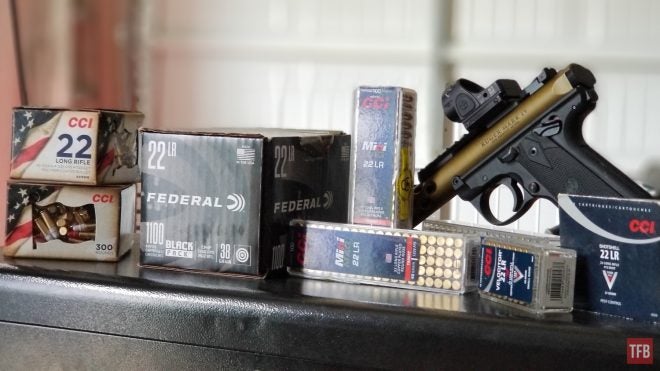Hello and welcome back to The RImfire Report. In this weekly series, we explore, research, and discuss various topics surrounding the rimfire firearm world. This week we’ll be discussing storing rimfire ammo for long periods of time. It’s no secret that the current global climate has led to not only ammunition supply chain shortages but also a lot of panic buying. So if you’ve recently purchased possibly tens of thousands of rounds of rimfire ammunition and are looking to store it properly, we’ll give you a brief yet detailed guide here.
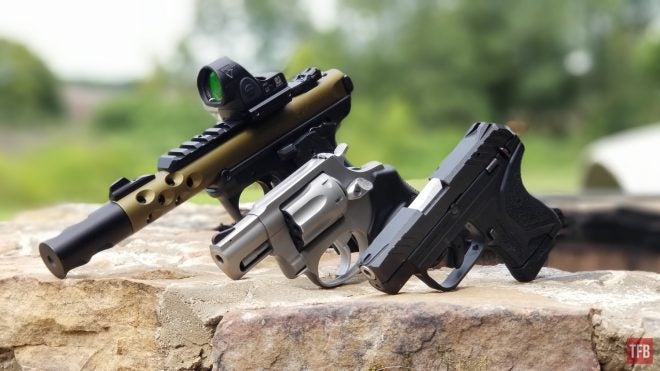
The Rimfire Report: Storing Rimfire Ammo Long Term
The Rimfire Report: Storing Rimfire Ammo Long Term
These tips can apply to all ammunition in general, however, rimfire ammunition, in general, tends to be a bit less reliable long term due to a number of various factors surrounding the design of the cartridges and the methods often used to seal them against the elements.
Most centerfire cartridges are usually crimped by the case neck into a sturdy copper jacket providing a tight, virtually waterproof seal against ingress. Modern priming techniques often employ some sort of primer sealant which also protects the rear end of the case from ingress as well. Rimfire ammunition doesn’t have either of those things.
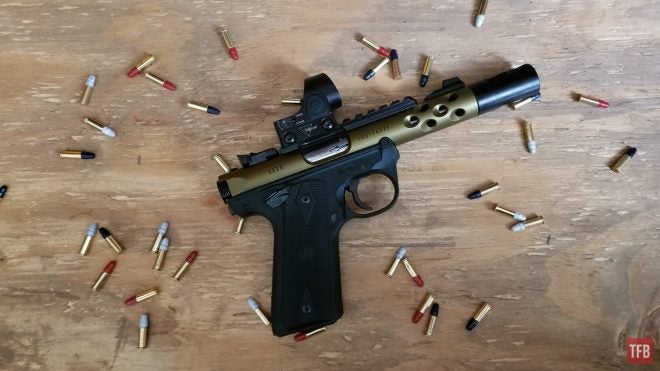
The Rimfire Report: Storing Rimfire Ammo Long Term
For one, there is no bottom location for ingress but the primer material inside rimfire cases starts its life off as a paste which then gets pressed into the rim and dried. Over time the primer material can crack and leave voids in the rim which can cause failures to fire. Secondly, rimfire ammunition, at least 22LR tends to have soft lead bullets that either have no jacket or only a thin copper plating or polymer coating. I’ve oftentimes found bulk rimfire ammunition to be the worst candidate for this
So now that we know some of the challenges we are facing with rimfire ammunition, how do we combat them and ensure that our favorite plinking ammunition stays fresh for the foreseeable future?
Storing Rimfire ammo: Climate Control
One of the chief culprits for the degradation of our ammunition is moisture. Like we discussed, centerfire ammunition is sealed very well against the elements and can even be submerged in water and remain operational. Meanwhile, some of you will remember a previous article I wrote regarding submerging rimfire ammunition for barely a day, and the results were what you’d expect – the ammunition was far less reliable and many failures to fire and squibs were experienced.
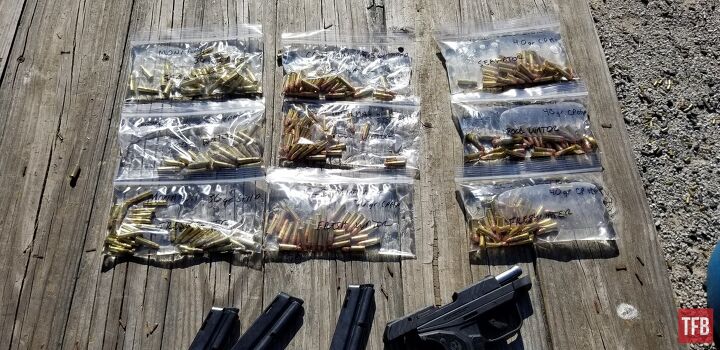
The Rimfire Report: Storing Rimfire Ammo Long Term
Common sense will tell us to keep the ammunition out of the water, however, storing the ammunition either in a garage, attic or out in the shed is an equally bad idea. Big swings in temperature can cause moisture to collect on the ammunition. I live in the sweltering heat and humidity of the south and it’s not uncommon for the temperature outside to range from the mid-50s all the way up to the 100s in the span of a day.
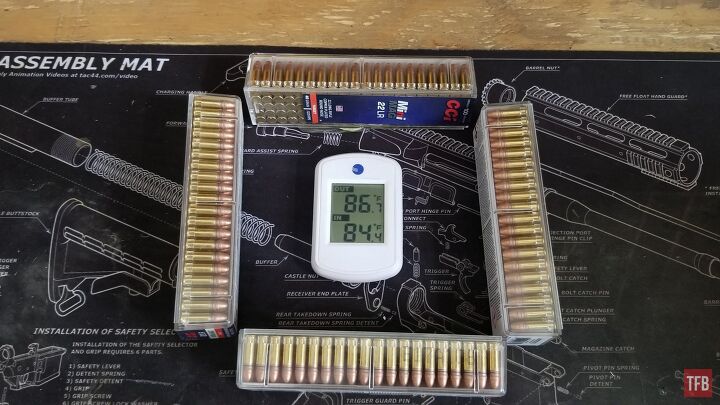
9AM on a Sunday morning
The key here will be to do your best to store your ammunition in a place that has a stable temperature and doesn’t change relative humidity often. If your gun safe is inside your garage and you store ammunition in there you should probably invest in a good dehumidifier which will help mitigate any moisture developed in the air due to temperature change.
If you can’t store your ammunition in a climate-controlled location, the next best thing to do would be to store it in an airtight container with several desiccant packs in order to absorb any moisture from temperature changes. I hoard these things whenever I find them so I’m never in short supply.
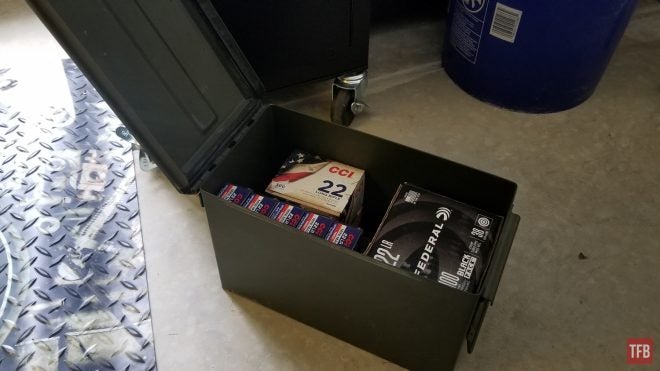
Low to High
Another consideration is for when you take your ammunition out to the range. In the summer heat, it isn’t uncommon for condensation to build up around your guns, ammunition, and shooting glass when you leave the house or the car and enter the heat (or the opposite in colder months).
This is a direct result of advection fog which is when warm is passed over a cool surface causing condensation to build up. Most of you will be familiar with this either from wearing glasses or when bringing your scoped rifle out of your cooled vehicle into the hot air. Your rimfire ammunition will be subjected to the same thing and repeat trips in and out of the car and back into the house can cause this moisture to eventually enter the case and cause reliability issues.
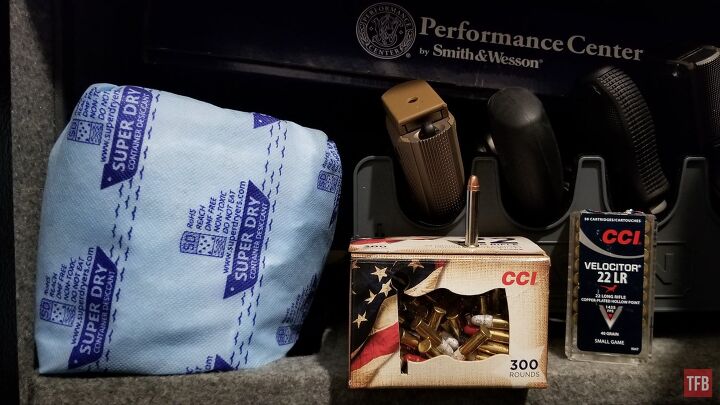
Large desiccant packs like the one pictured here can often be sourced from warehouses for free
My recommendation would be to take only what you will end up shooting with you. You probably don’t need to worry as much about this with higher quality ammunition but eliminating any variables in storage temperature will help ensure the ammunition lasts as long as possible.
I have often seen rimfire competitors keep their rimfire ammunition in a cooler instead of a range bag. Since coolers are insulated any temperature changes are mitigated and temperature-sensitive ammunition is kept from another variable that can affect performance.
Storing Rimfire Ammo: The Ravages of time and Transport
The next two big items that tend to lead to unreliable ammunition are storage time and movement. The chief concern with time is not the propellant or even the primer material at the bottom of the case but the lube surrounding the bullet. Academy Sports’ in-house brand Monarch 22LR ammunition has a thin film around the bullet that acts as both a lubricant and a light weather seal. Over time this will dry out and leave your ammunition exposed to ingress by outside air.
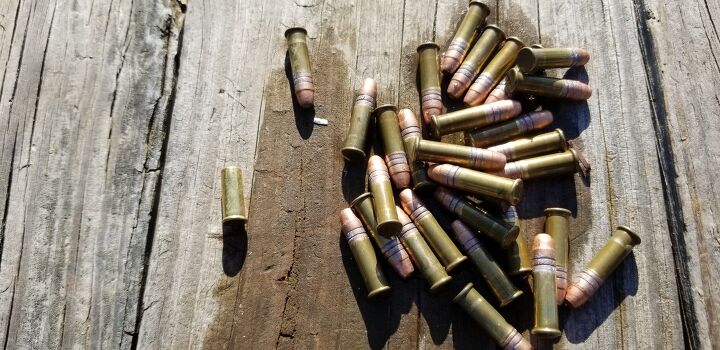
Finally, we have the Achilles heel of the rimfire primer – movement. Since the primer material is pressed into location and dried, it is only logical that it is capable of cracking and becoming dislodged from the rim. In fact, I’m certain that all of you have had a 22LR round fail to fire and then taken it out, reseated it, and had it go off by having the firing pin strike a different location.
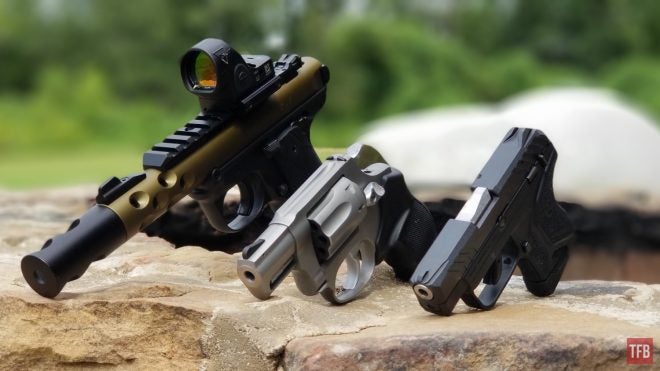
The best way to mitigate this aside from proper climate control is to avoid moving the ammunition and avoid any sudden shock to the ammunition when transporting it. Be mindful of your range bag and don’t just drop it to the ground and risk shaking up your ammo.
It won’t last forever
The sad part of shooting rimfire is that unreliability is just another part of the game. Try as hard as we might, we sometimes just can’t avoid that inevitable failure to fire. Time, as with all things will eventually degrade everything and for 22LR in particular that rings more true than ever.
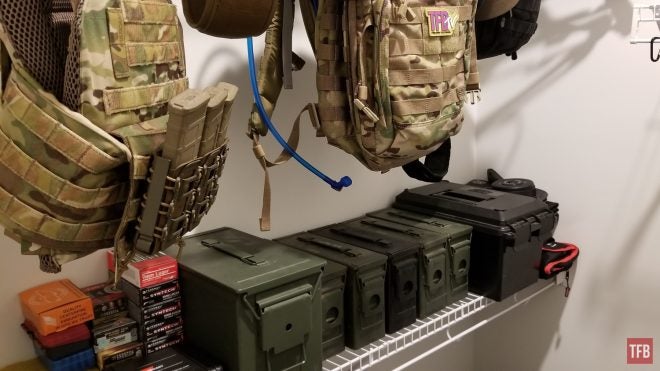
Ideal storage: Sealed containers in a climate-controlled room
In the past, I would only keep a couple of months supply on hand but with uncertain times ahead I’ve had to up my stockpile and start keeping better track of my oldest ammo so I can shoot that first. Keeping track of older ammo is another way to make sure your stock is good to go when you’re ready to shoot.
I’d like to hear what some of you guys do to store your ammo and what practices you find work best for longer-term storage. As always thanks for stopping by to read The Rimfire Report and we’ll see you in the next one!
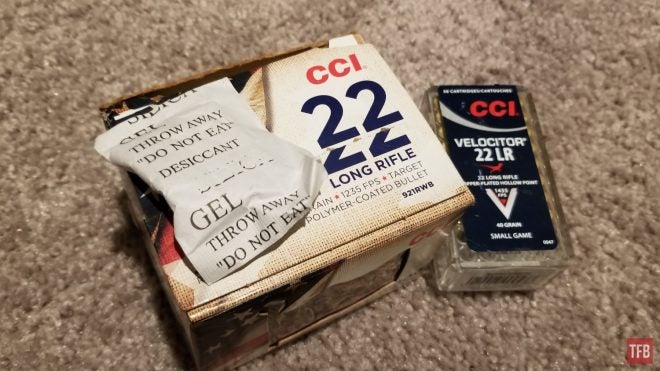
We are committed to finding, researching, and recommending the best products. We earn commissions from purchases you make using the retail links in our product reviews. Learn more about how this works.
 Your Privacy Choices
Your Privacy Choices
